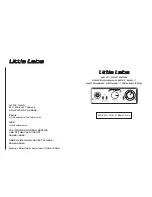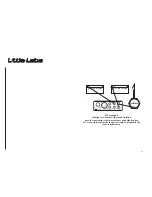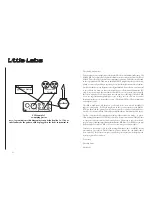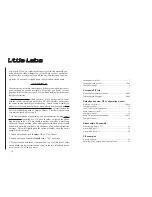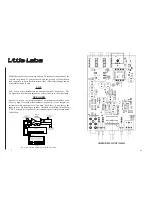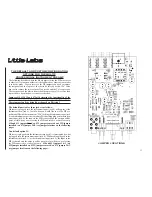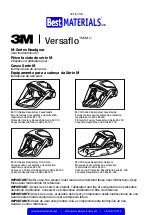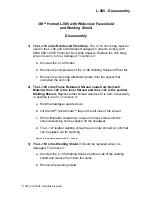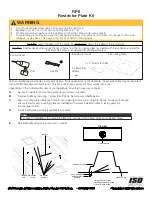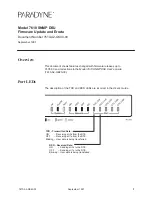
IMPEDANCE SELECTION
THE BIG
Z
The letter Z, common abbreviation for impedance. The Multi Z PIPs se-
lectable input circuits (hi, mid, lo and speaker) are designed for optimum
performance on different source impedances. It is not switching input
resistors in circuit as some DIs do, or an actual potentiometer in circuit
(sometimes called a drag control) which basically work as primitive tone
control or dulling load. The Multi Z PIP has a different circuit topology
for the mid and hi and for the lo and speaker we bypass the active input
circuitry altogether (Why? Because it sounded better without). Each im-
pedance optimized circuit brings out the full tone of an instrument, we
leave the EQ up to you. The following is a rough guide to follow as far
as what type of instrument sounds best with which input setting.
HI Z
Hi impedance input, use with a passive instrument (no onboard preamp)
like a Precision Bass™, Stratocaster™, Les Paul™ or piezo type pickup
instrument.
Tip: The Ovation™ guitars have piezo pickups but use an internal battery
powered preamp. This preamp can be internally bypassed with a female
mini plug to 1/4” plug adaptor. Running the Piezo pickups directly to
the Multi Z bypassing the Ovation preamp, will drastically improve the
sound of this instrument.
MID Z
Mid Z, use for an active instrument (on board preamp) or keyboard. The
main advantage of the Mid Z position on the Multi Z Di is the ability to
isolate the ground on the input (see fig.1). This works like a balanced in,
so if you have a keyboard rack cue mixer you can take your keyboard
output, mult off the Multi Z to the keyboard rack cue mixer, and send the
2
17
Non default option 1F
Transformerless, the naked truth. If you want you can order the Multi Z
PIP without an output transformer at all. The original Multi Z did not have
a transformer on the output. A transformer IMHO, on the Multi Z PIP at
least, is just better for ground isolation. The transformer used is very good
and was chosen not for a sonic foot print but for transparency, so if you
don't need it, or you are typically feeding an already transformer coupled
input, then save yourself a few bucks. Then again, the transformer can
eliminate headaches that only a transformer can solve, you won't regret it.

